Implants are not one size fits all. Each manufacturer has its own line and system, and each system has different characteristics that affect protocols for impression taking, retention, and restoration. The connection geometry alone looks different with each implant system out there.
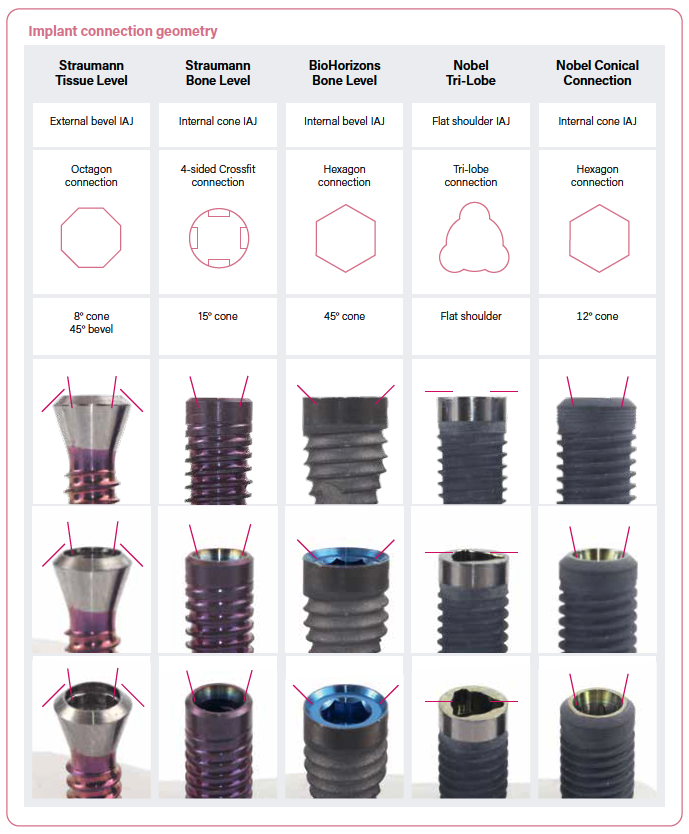
Straumann Tissue Level implants have an octagon connection with an 8-degree cone and 45-degree bevel, Straumann Bone Level implants have a four-sided Crossfit connection with a 15-degree cone, BioHorizons Bone Level implants have a hexagon connection with 45-degree cone, Nobel Tri-Lobe implants have a tri-lobe connection with flat shoulder, and Nobel Conical Connection implants have a hexagon connection with 12-degree cone. All of these details affect how the abutment will seat and how the restoration will be retained. You don’t always have the luxury of restoring implants placed in your own practice, and that’s when the details of the implant system become crucial for proper restoration contour and retention. Just look how they affect the implant-abutment junction in each.
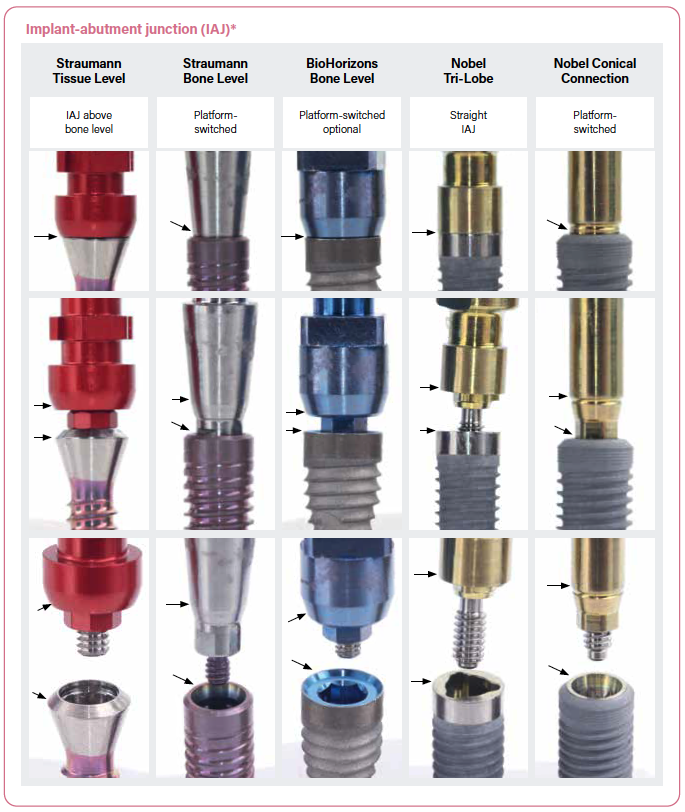
Todd Schoenbaum understands how important all of these details are to clinical practice, which is why he wrote his latest book titled Implant Prosthodontics: Protocols and Techniques for Fixed Implant Restorations. He knows that clinicians need to understand it all, so he covers it all, from principles of implant prosthetics to patient management, instrumentation and preoperative procedures, impressions, restorations, provisional restorations, and complications. The book is chock full of useful, practical information you can use in your office tomorrow. For example, implant components are very small, so inhalation or swallowing of these tiny pieces is a real cause for concern. Dr Schoenbaum therefore promotes use of the three-finger grip as the most secure, most tactile method for using an implant driver in the mouth. He details how to use the fingers properly to ensure consistent pressure on the driver during tightening or removal of implant components, knowing that this three-finger grip is critical to allow for rotation of the driver without any components or the driver itself falling off. He even includes a video to show how this is done.
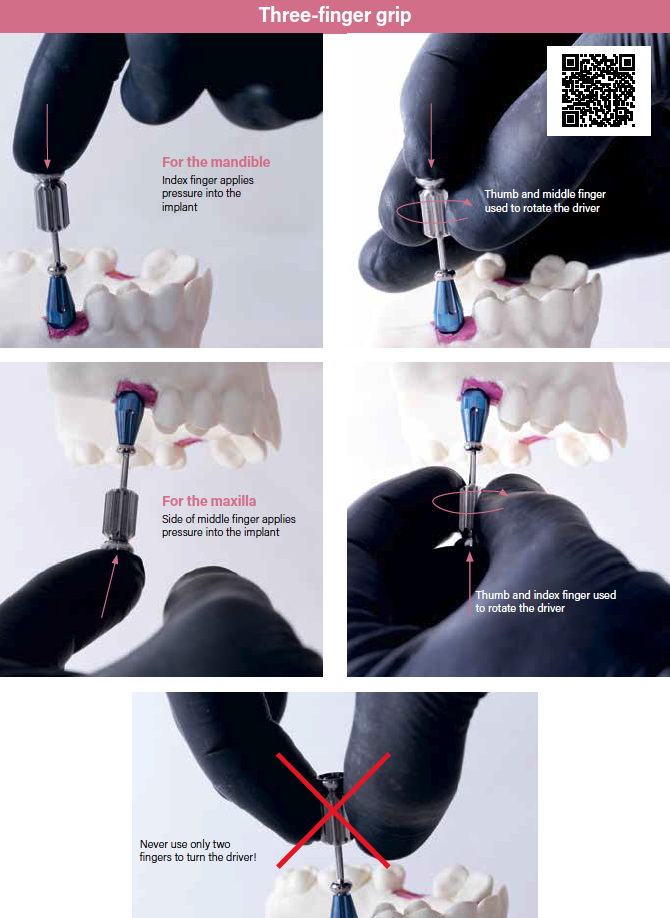
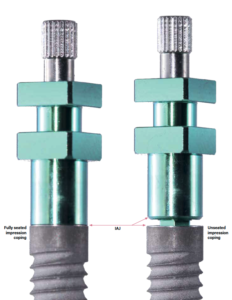 This is just one example of many where he takes the time to explain how to perform individual steps properly to maximize patient safety and clinical success. He is also wise to show what things should and shouldn’t look like at any given step. Take impression copings, for example. This is what proper and improper seating look like.
This is just one example of many where he takes the time to explain how to perform individual steps properly to maximize patient safety and clinical success. He is also wise to show what things should and shouldn’t look like at any given step. Take impression copings, for example. This is what proper and improper seating look like.
Throughout the entire book, the goal is always to empower clinicians to restore implants correctly and with the most success. That’s why Dr Schoenbaum includes an appendix full of step-by-step protocols for nearly every procedure performed in the implant prosthodontist’s office. He wants to guide you through the complex world of implant prosthodontics in a way that is easy to reference every step of the way. If you’re looking for a one-stop shop for implant prosthodontics, look no further. Preview the book here.
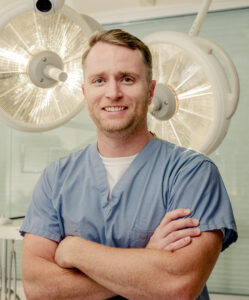 Todd R. Schoenbaum, DDS, MS, is a Professor at the Dental College of Georgia, where he serves as the Coordinator for Implant Education and Related Research, training residents and students in implant restorations and clinical research. He was previously full Clinical Professor at the University of California, Los Angeles (UCLA) and Director of UCLA Continuing Education. Dr Schoenbaum has published over 50 papers and 2 textbooks, and he is the recipient of the scientific writing award from the Journal of Prosthetic Dentistry. He has a master’s in clinical research from the UCLA School of Medicine, and he has been invited to present his clinical and scientific work at conferences worldwide.
Todd R. Schoenbaum, DDS, MS, is a Professor at the Dental College of Georgia, where he serves as the Coordinator for Implant Education and Related Research, training residents and students in implant restorations and clinical research. He was previously full Clinical Professor at the University of California, Los Angeles (UCLA) and Director of UCLA Continuing Education. Dr Schoenbaum has published over 50 papers and 2 textbooks, and he is the recipient of the scientific writing award from the Journal of Prosthetic Dentistry. He has a master’s in clinical research from the UCLA School of Medicine, and he has been invited to present his clinical and scientific work at conferences worldwide.
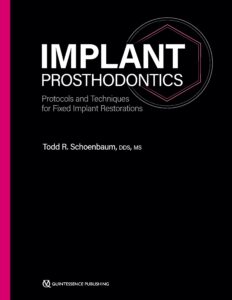 Implant Prosthodontics: Protocols and Techniques for Fixed Implant Restorations
Implant Prosthodontics: Protocols and Techniques for Fixed Implant Restorations
Todd R. Schoenbaum
This beautiful book was written as a guide for the clinical practice of restoring implants in partially edentulous patients with fixed restorations. It provides the essentials of implant prosthodontic workflows and protocols based on the best available current evidence—and in stunning fashion too. As an educator, the author has designed the book so that readers may search for the specific procedure they intend to perform and have a concise guide on how to properly execute it. Each chapter provides guidance on selecting an appropriate protocol or restoration, explains the rationale for the given procedure, and provides a detailed step-by-step protocol followed by special considerations and potential complications. Many of the techniques also feature a QR code linking to a video demonstration of the procedure as well. To make the book maximally applicable and remove any erroneous extrapolation from one system to another, the author has included directions and photographic demonstrations for three of the major implant manufacturers—Nobel Biocare, Straumann, and BioHorizons. In addition, a robust appendix at the back of the book includes the checklists for nearly every procedure in the book; these can be photocopied or accessed electronically via QR code for download to ensure that each step of each procedure is performed properly. All in all, this is the most attractive and useful book on implant restoration you’ll find.
264 pp; 682 illus; ©2022; ISBN 978-1-64724-053-0 (B0530); US $128 (preorder)
